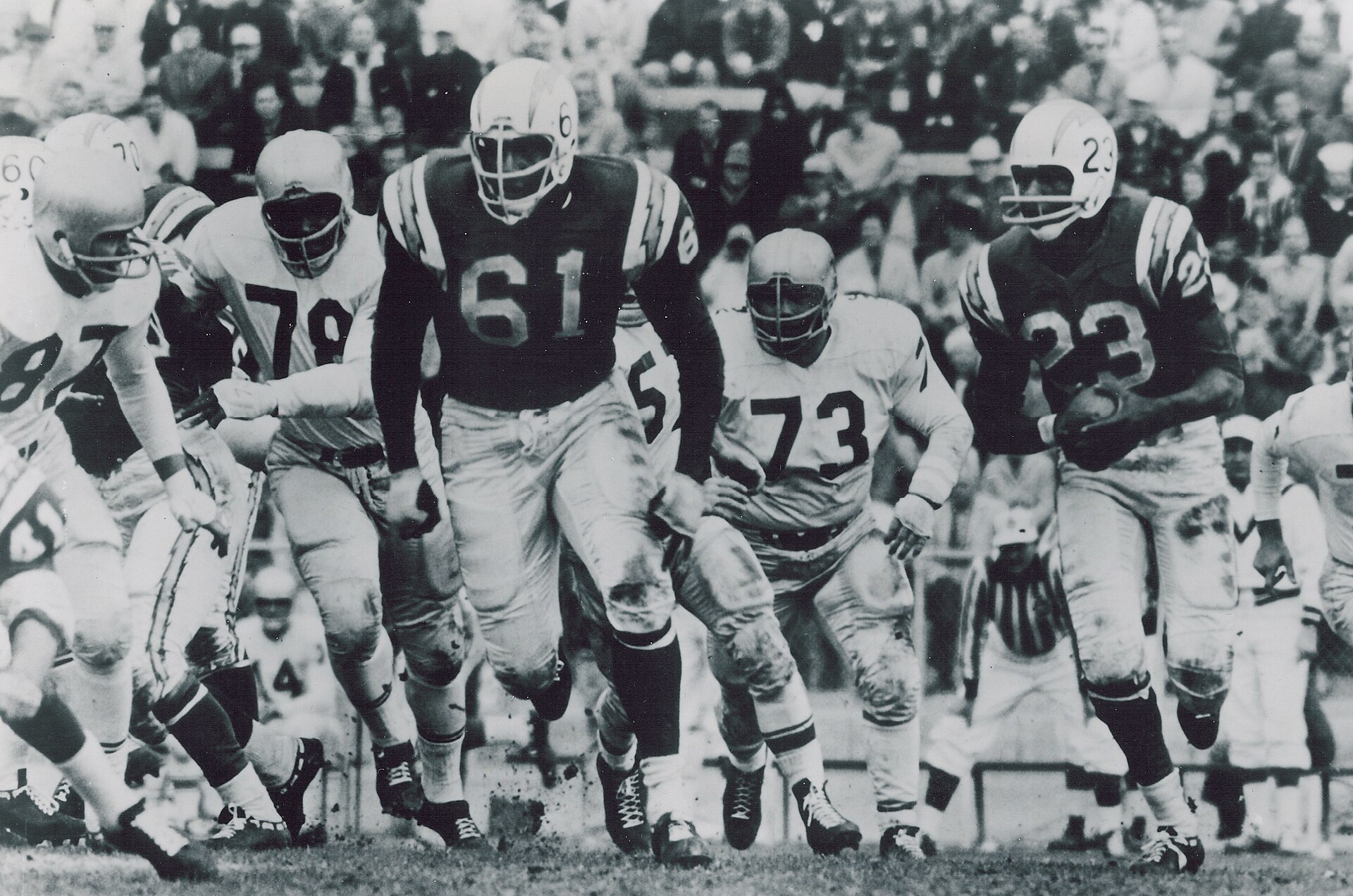While many are noted for one thing, Ernie Barnes proved himself to be a multi-genius, becoming a professional football player, painter, author and an actor.
He is considered a leading African-American artist and the first American professional athlete to become a noted painter.
Barnes’ compositions often filled with crowds of people were intended to promote racial harmony by showing people from different backgrounds standing side-by-side. “I am bound by the strongest ties with the organic life of all people,” he noted.
Barnes is commonly associated with The Sugar Shack painting inspired by the popular sitcom Good Times which depicts a crowd of people dancing in a jazz club, their bodies twisting and serpentine.
Barnes born on July 15, 1938 in Durham, NC graduated from the Hillside High School a hero and star football player with 26 full athletic scholarships to choose from. He began to experiment with painting while studying at North Carolina College.
After college, he continued with his illustrious professional athletic career but never let his love for football overshadow his love for art. Football gave him an enormous satisfaction of achievement, of being able to do something extremely difficult, and do it well. Art, however, allowed him the privilege to interpret for the public his concepts of the relationship between art and life.
After playing in the National Football League for five years (Baltimore Colts, Titans of New York, San Diego Chargers and Denver Broncos), the artist was hired by Sonny Werblin to be the official artist of the New York Jets.
Barnes Sr., worked as a shipping clerk for Liggett Myers Tobacco Company while his mother, Fannie Mae Geer oversaw the household staff for a prominent Durham attorney and local Board of Education member, Frank L. Fuller Jr.
On days when Fannie allowed June as Barnes is nicknamed, accompany her to work, Mr. Fuller encouraged him to peruse the art books and listen to classical music. He soon became familiar with the works of masters such as Toulouse-Lautrec, Delacroix, Rubens and Michelangelo and could decode many of the cherished masterpieces within the walls of mainstream museums – although he was prevented from gaining entry because of segregation.
As a child, Barnes was taunted and bullied by classmates because he was chubby and unathletic. He thus found refuge in his sketchbooks in the quiet parts of campus. His masonry teacher, Tommy Tucker, who was also the weightlifting coach and a former athlete upon fining him on one such occasion shared with him how bodybuilding improved his strength and outlook on life.
That encounter changed many things for Barnes who in his senior year at Hillside High School became the captain of the football team and state champion in the shot put.
At age 18, on a college art class field trip to the newly desegregated North Carolina Museum of Art in Raleigh, Barnes inquired where he could find “paintings by Negro artists”. The docent responded, “Your people don’t express themselves that way”. Twenty-three years later, in 1979, when Barnes returned to the museum for a solo exhibition, North Carolina Governor Jim Hunt attended.
In 1990 Barnes was awarded an Honorary Doctorate of Fine Arts by North Carolina Central University.
In 1999 he was bestowed “The University Award”, the highest honor by the University of North Carolina Board of Governors.
After retirement, New York Jets owner Sonny Werblin who was intrigued by Barnes and his art retained him as a salaried player, but positioned him in front of the canvas, rather than on the football field telling Barnes “You have more value to the country as an artist than as a football player.”
Barnes’ November 1966 debut solo exhibition, hosted by Werblin at the Grand Central Art Galleries in New York City was critically acclaimed and all the paintings sold.

In 1971, Barnes wrote a series of essays (illustrated with his own drawings) in the Gridiron newspaper titled “I Hate the Game I Love” (with Neil Amdur). These articles became the beginning manuscript of his autobiography, later-published in 1995 titled From Pads to Palette which chronicles his transition from professional football to his art career.
Barnes framed his paintings with distressed wood in homage to his father. In his 1995 autobiography, Barnes wrote of his father: “… With so little education, he had worked so hard for us. His legacy to me was his effort, and that was plenty. He knew absolutely nothing about art.”
In response to the 1960s “Black is beautiful” cultural movement and James Brown’s 1968 “Say it Loud: I’m Black and I’m Proud” song, Barnes created The Beauty of the Ghetto exhibition of 35 paintings that toured major American cities from 1972 to 1979 hosted by dignitaries, professional athletes and celebrities.

Of this exhibition, Barnes said, “I am providing a pictorial background for an understanding into the aesthetics of black America. It is not a plea to people to continue to live there (in the ghetto) but for those who feel trapped, it is…a challenge of how beautiful life can be.”
The Los Angeles Olympic Organizing Committee named Barnes “Sports Artist of the 1984 Olympic Games.”
In 1985, Barnes was named the first “Sports Artist of the Year” by the United States Sports Academy.
In 2004, he was named “America’s Best Painter of Sports” by the American Sport Art Museum & Archives.
Barnes’ work has appeared on the covers of several albums, including BB King’s Making Love is Good For You and Marvin Gaye’s I Want You. In 2004, the artist gained media attention after he was commissioned to paint the mural A Life Restored for Kanye West, which reflected on the rapper’s near-fatal car accident.
Barnes died on April 27, 2009 in Los Angeles, CA. His work is currently held in the collections of the American Sport Art Museum and Archives in Daphne, the Seattle Art Museum and African American Museum in Philadelphia.










